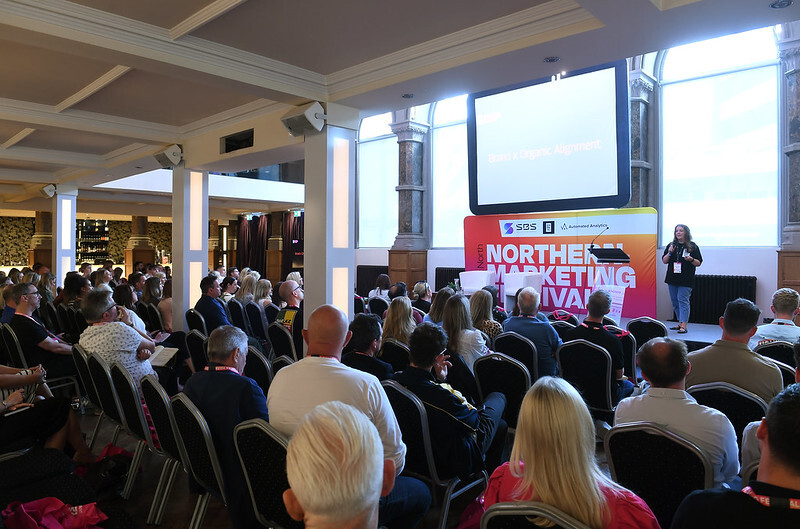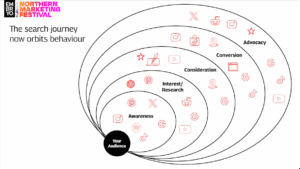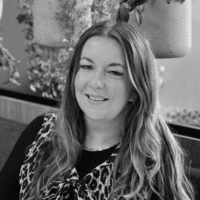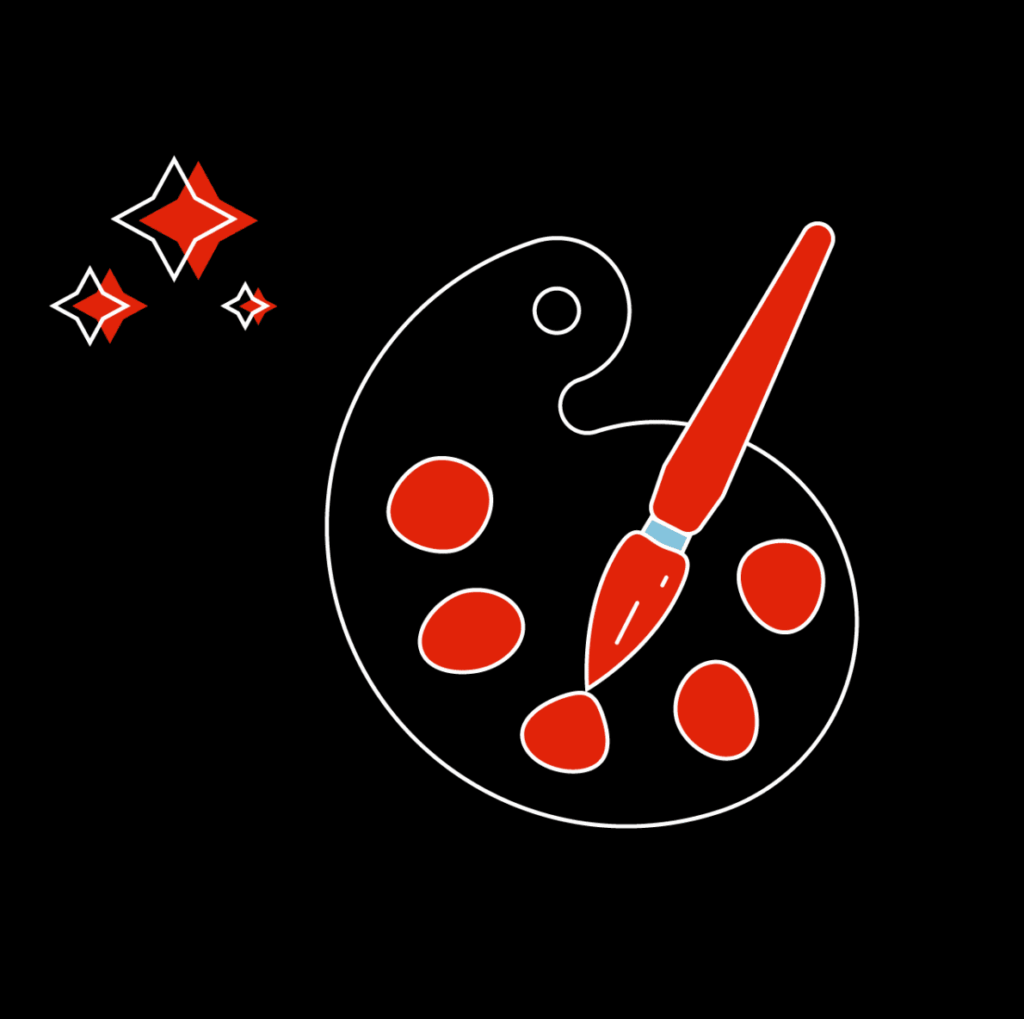
Is search changing? Northern Marketing Festival day 2 recap

Last week, I had the pleasure of speaking at Prolific North’s Northern Marketing Festival in Leeds. The theme for the day was “Creativity Through the Lens of Tech,” and the room was full of marketers, strategists, and creatives who were keen to explore how our industry is evolving in a world full of new buzzwords and marketing fads.
The day was full of insights about how we can bring the most value for our clients, especially in times when new technologies, such as AI, are being integrated into our workflows. One of the biggest questions people were left asking themselves was how they could adapt and evolve with these new technologies.
The theme and the two key topic areas of creativity and tech really got me thinking about how these two areas apply to organic marketing, which is how I landed on my talk topic: Search Reimagined: The New Organic Playbook.
At its core, my session covered how organic strategy is increasingly defined by the overlap of technological innovation and human creativity. Creativity is something that organic search is often not associated with, but we should start to think beyond the traditional technical checklists and consider our organic strategies as more of a creative discipline, rooted in audience behaviour, emotional resonance and cultural context.
Before I dive into my talk in more detail, I wanted to highlight the other talks throughout the day that stuck with me and reinforced the importance of overlap between technology and creativity.

My top takeaways from the day
The main thing that stood out to me throughout the day was how refreshingly grounded all of the conversations were. The talks didn’t just touch on the surface of topics; they tackled the messy, nuanced reality of modern marketing. Whether it was social media, branding or AI, every session felt like it spoke to one key point: creativity isn’t being replaced by tech; they’re working alongside each other.
Naomi Horan from CLOUD NINE spoke about how community is no longer a nice-to-have, but it should be at the core of any modern marketing strategy. She spoke about how we need to move away from just chasing reach and focus on building emotional stickiness, where metrics like saves, shares and watch time matter more than just views. This talk echoed a wider theme across the day: stop broadcasting and start connecting.
Several speakers challenged the room to embrace a test and learn mindset. Adam Zavalis from ASDA reminded us that creativity often thrives under constraint. He called on the people in the room to adopt a startup mentality, and by this, he meant that we should work at a quicker pace, speak to the audience in their language and avoid over-engineering. It was a refreshing take that felt like a reality check in a world of over-planning.
Internal alignment was the overarching message from Steven Hadden and Mark Cullen at MadeBrave. They spoke about how rebranding is so much more than a visual refresh, and it should be considered a business transformation that is felt throughout the entire company. They spoke through an exciting example from First Buses and outlined how they used real insight from First Buses staff about their day-to-day to ensure the messaging would resonate and be accepted by everyone who works there.
Jamie Peate and Holly Harper from McCann highlighted how creativity can be used as the ultimate scroll-stopper. They shared various case studies about how they’ve worked with brands to own their own voice and act like “disruptors”, but they also shared what you can do with more “difficult” brands where you have to deal with regulations, so you can’t be as playful.
Another talk that resonated with me was the panel between Sarah Link from La Redoute and Nina Ricks and Rob Shaw from HUB. They spoke about how they’ve been experimenting to develop the boldest campaign ideas, and how unexpected brand pairings could be the way to generate exposure.
Throughout the day, I really felt the sense that the marketing industry is at a turning point. We’re being bombarded with the latest “new” thing we have to do as marketers, and while technology will change how we work, the biggest shift needs to be in how we think, and that should be focused more on human behaviour and targeting our audiences effectively, rather than trying to beat the algorithms.
Search reimagined: The new organic playbook
As I’ve already touched on, one of the key themes in my talk was about how we can redefine creativity in search marketing. In a similar message to the other talks of the day, I spoke about how human insight can be used as a competitive advantage for our strategies. While new technology can be useful for generative tasks, our key differentiator is how we can interpret trends, decode cultural signals and tell stories that resonate.
I also touched on how search is no longer just Google, our audiences are searching on other platforms such as social media, AI and forums. It’s no longer enough for us to only think about traditional search engines with our organic strategies, and we need to be more fluid in our platform literacy.
The underlying message of my talk was how “ranking” is no longer the key metric for organic marketing, and due to technological changes and an evolution in how people search, the measurement metrics are much more nuanced, and we need to consider visibility, trust and cultural reference.
Here’s a summary of what I covered:
The search landscape has shifted
We’re no longer in the era of ten blue links; search behaviour is much more fragmented across different platforms. People are now “Googling” on TikTok, ChatGPT, Reddit and Amazon, to name just a few places. What we can also see is that users are learning behaviours from these platforms, and if we don’t adapt to these new behaviours, we’ll miss the audience entirely.
The search journey is no longer linear
While the classic search journey model assumes a neat linear path, the new reality is much messier. Users jump between platforms, and they jump between stages. Search now revolves around the audience’s behaviour, not just the intent, so our strategies should too.

Search is more than just “SEO”; it’s an organic strategy
We need to think beyond just SEO and upgrade our strategies to think more “organically”. This isn’t about abandoning the SEO fundamentals; we just need to include them as part of a bigger picture. Organic marketing is no longer a cycle of repetitive tasks; it’s a network of interconnected channels that work together to build trust, earn attention and drive action.
Audience alignment is a non-negotiable
Before you do anything, you need to understand who your audience is, where they are searching and what they are searching for. Once you understand this, you can audit your overall alignment with them, are you visible in the places they are searching, are you providing value, and does your voice fit with what they want to hear?
Cultural curiosity is a search strategy
Cultural signals are often something that isn’t associated with search strategies, but they can provide real insight into how your audience is searching online. If we think beyond keywords with these cultural moments, we can find things such as emerging identity shifts, unspoken frustrations, and nostalgia waves. All of these things are organic search opportunities in disguise.
SERP Psychology is the art of earning attention
SERP psychology is about how we, as marketers, can understand our audience’s behaviours when they land on the SERP, and I mean any SERP, not just Google. Once we understand this behaviour, we can start to earn attention in the SERP.
Ranking #1 is no longer the ultimate performance metric for organic search, as ranking #1 no longer guarantees a click. Share of SERP is a better metric to measure, as the more we appear on the SERP page, whether that’s our own content ranking, UGC that mentions us, news mentions, appearance in SERP features, etc. ensures we have the most attention on our brand as possible.
Authority is no longer just links
Modern authority signals are not just backlinks; they’re earned through community validation. It differs per platform, but saves, stitches, mentions, reviews, etc. are the new indicators of authority and brand trust.
AI visibility is organic visibility
The same general rules apply to optimising for AI platforms as they do for traditional search platforms. Ultimately, it’s about being the brand that has the most attention, is the most relevant to the queries and is the most trustworthy. To me, AI search is the new “word of mouth”, but instead of being the brand of choice for one person’s opinion, your brand needs to be the one of choice for the collective opinion online.
Search is evolving, and so should we
We know technology is going to change the way we work in marketing, and we need to adapt to these changing times; however, it’s how we connect with our audience that is going to set us apart. For organic marketing in particular, this means rethinking how we define success, how we can use creative thinking, and what “search” even is any more.
We can no longer rely on the old “rules” of SEO; we need to think bigger. Ranking first no longer guarantees visibility, authority isn’t just about links, and your audience isn’t only searching on Google. To stay relevant, we need to evolve and start to build strategies that are culturally aware, platform fluent and audience obsessed.
If you want to level up your organic strategies, make sure you download the new Organic Playbook from Embryo or get in touch with our team.



